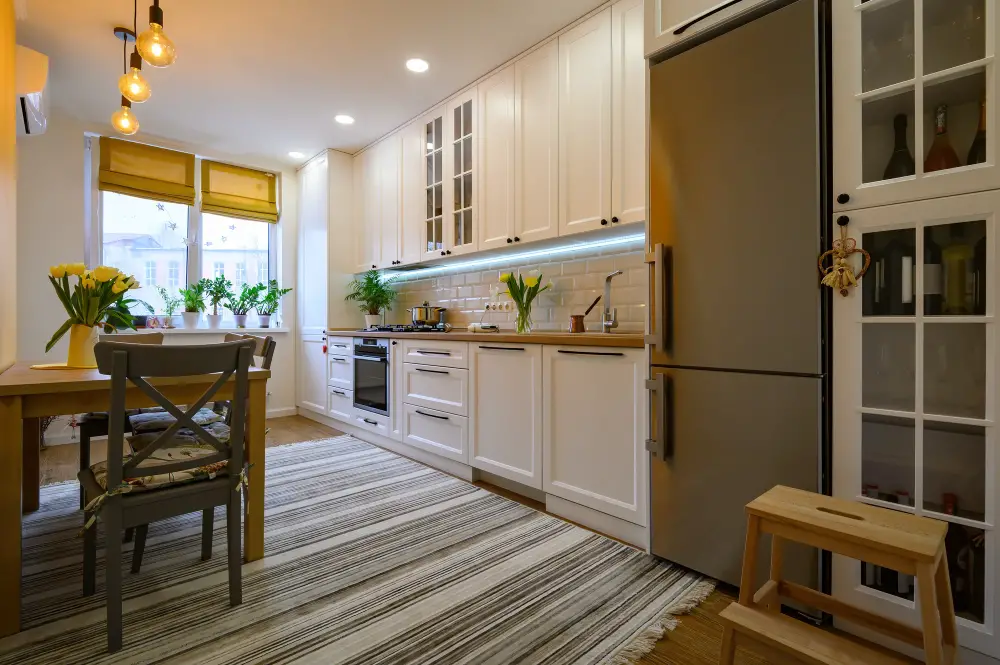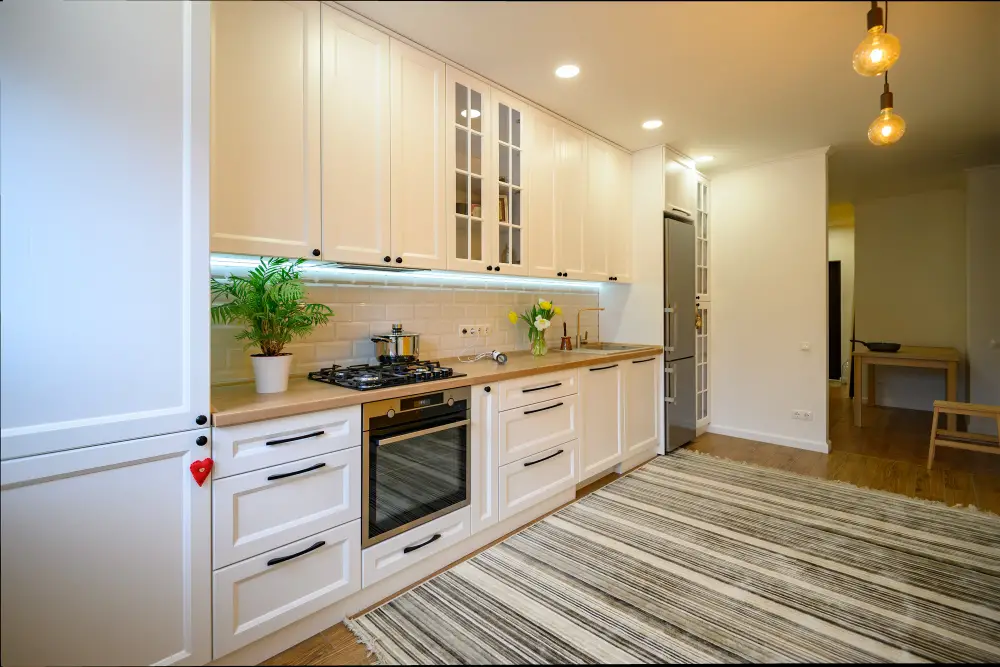Last updated on
Kitchens are one of the most important rooms in the home, and they are also one of the most expensive to renovate; even a minor kitchen remodel can cost $10,000 or more. As such, it’s important to get it right the first time by thinking carefully about each aspect of the room in terms of its utility, ease of use, and aesthetics.
These are some of the most important components of a well-designed kitchen that will remain a main attraction for decades.
What's Inside
Focus on Flow

The “flow” of a room is about how you move from one workstation to the next while working, such as when prepping a meal. You want to have a seamless flow that doesn’t require people to turn around, back up, or awkwardly sidle around one another when they need to get from one part of the kitchen to another.
This is why islands are such a popular option for kitchens: they make it possible to move around easily while also maximizing storage space and surface area for prep work.
Cabinets below the counter can serve as extra storage, or they may be where you put the day’s waste for compost; you can even use the kitchen island as an extra table by placing bar stools around it. While an island does require more square footage, it also pays for itself in terms of enjoyment and utility.
Let There Be Light
Lighting is important all throughout a home, but it is especially so in the kitchen. You need abundant lighting to read cookbooks, measure items, check that a dish has reached the right consistency, and serve things with ease; plus, low light can be a safety hazard if you accidentally cut yourself with a knife because you can’t see what you were doing.
One single overhead light doesn’t really do the trick when it comes to the kitchen, even though it may suffice in a dining room or living room. Instead, think about task lighting: small overhead lights that often operate independently, letting you to light up different areas of the room as necessary.
If you don’t like this idea, consider track lighting instead, which is a small row of lights that hangs in a bar above a specific area. These provide ample, focused lighting that will make sure everything is crystal-clear as you work.
Choose the Right Flooring

Flooring is one of the most important decisions that you will make in a home because it is one of the most hard-working surfaces there. Trod on dozens of times a day, good flooring makes a huge difference in the safety and attractiveness of your home.
It’s obvious that you don’t want carpet or hardwood in your kitchen, but beyond that, you may not really think about the differences in tile, vinyl flooring, or linoleum. Generally, tile and vinyl flooring are your best choices when it comes to the kitchen because they are both very water resistant.
While linoleum can also resist water, it is made of sheets that can start to separate from each other in a high moisture environment like a kitchen or a bathroom.
Many homeowners prefer small subway tiles in a kitchen for a specific reason: the tiles can be easily replaced if they are damaged, unlike having to rip up whole areas of vinyl flooring. With so many heavy appliances in the space, it’s not uncommon for tiles to be cracked when shifting around stoves, ovens, and refrigerators.
With small subway tiles, you can simply remove the old one, replace it, and fix the grouting around it until all is as good as new.
Work with a Plumber
There’s nothing scarier than finding your home flooded and having to figure out what to do if water is under cabinets and flooring. The best way to avoid this is to simply never have it happen in the first place by building a good relationship with a plumber.
Those designing a kitchen need to work with a highly qualified plumber who can plan out every pipe and hose for maximum efficiency and safety, as well as ensure everything is installed according to industry standards. As there are so many water-using appliances in a kitchen, a plumber will make sure all the outlets are available where they need to be and that you won’t run into problems when trying to install a new appliance.
Kitchen design is a specific subset of interior design that must be given its due. There are so many things to think about when designing your new kitchen, including how to maximize efficiency, ensure enough storage, and allow for a stress-free experience.
Layout, flooring, lighting, and proper plumbing will be key players in whether you have a kitchen you fall in love with or one you’d like to break up with as soon as possible.




